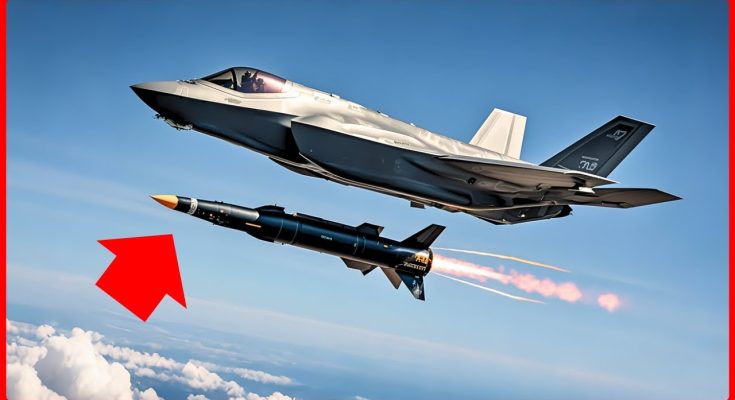Crazy Mission: US Air Force Combines Two Damaged Jets Into F-35 ‘Franken-Bird’
In an incredible demonstration of innovation and resourcefulness, the U.S. Air Force has embarked on a mission that sounds like something out of a science fiction film: the creation of a “Franken-Bird” F-35 fighter jet. This audacious project involves combining the remains of two damaged F-35 aircraft to create one operational fighter jet. While this may seem like a daring and unorthodox move, it highlights the Air Force’s ability to adapt and overcome challenges in the face of dwindling resources, combat damage, and technological ingenuity.
The Origins of the ‘Franken-Bird’ Project
The F-35 Lightning II, known for its stealth capabilities, advanced avionics, and multi-role versatility, is one of the most advanced fighter jets in the world. However, as with any complex piece of military hardware, F-35s are not impervious to damage. Whether from accidents, enemy action, or wear and tear during high-intensity operations, fighter jets occasionally suffer significant damage that may leave them grounded for extended periods.
Typically, when an aircraft is damaged, the standard procedure is to either repair it or, if the damage is too severe, write it off. But in an extraordinary turn of events, two F-35s, both suffering irreparable damage in different parts of their airframes, were brought together for an unconventional mission: combining parts from both aircraft to create a single, operational F-35. This daring “Franken-Bird” project was born out of necessity. With the military facing high operational demand and long lead times for new parts, finding a way to salvage these two jets was critical to maintaining fleet readiness.
The Engineering Feat: Combining Two Jets
The process of creating a “Franken-Bird” was no simple task. The F-35 is a highly complex aircraft, and its design involves intricate systems, including its stealthy radar-absorbing skin, advanced avionics, and integrated weapon systems. Repairing or replacing a single component on these jets can take months of planning, testing, and parts sourcing. But when two jets suffer different types of damage, combining their healthy components into one functioning unit becomes a unique engineering challenge.
Air Force engineers and maintenance crews had to carefully analyze both F-35s and determine which parts were still viable for reuse. The project involved swapping out intact sections of fuselage, wings, avionics systems, and engines. The “Franken-Bird” had to be meticulously pieced together, ensuring that the integrity of the aircraft wasn’t compromised, and all systems would function as designed.
Despite the challenging nature of the project, the Air Force proved that with ingenuity, parts from two damaged aircraft could be combined to produce one that was as effective as a fully functional F-35.
A Symbol of Innovation and Efficiency
The creation of the “Franken-Bird” F-35 goes far beyond just patching up a broken jet. It serves as a testament to the adaptability and innovation of the U.S. Air Force. This project is an example of how the military is leveraging new strategies to optimize its existing resources, especially during times of high demand and limited availability of new aircraft. By combining parts from two damaged jets, the Air Force was able to return a fully functional F-35 to service in a fraction of the time it would have taken to acquire a replacement aircraft.
Additionally, the “Franken-Bird” demonstrates the depth of the Air Force’s technical expertise and problem-solving skills. Rather than simply writing off two valuable assets, they found a way to extend the life of these aircraft and ensure the mission could continue without interruption. This type of ingenuity could be invaluable in future conflicts, where resources might be stretched thin, and creative solutions will be necessary to keep fighter fleets operational.
A New Era of Aircraft Maintenance
The success of the “Franken-Bird” project could set a new precedent for aircraft repair and maintenance across the military. While this type of operation is not likely to become a routine practice, it shows that, with the right combination of engineering expertise, technical know-how, and resourcefulness, even seemingly irreparable situations can be turned into success stories.
In conclusion, the creation of the F-35 “Franken-Bird” is a striking example of the U.S. Air Force’s ability to think outside the box and maximize its resources. It’s a story that will be remembered as an exceptional case of resilience and ingenuity in military aviation, and a reminder that sometimes, the craziest solutions can yield the greatest results. The “Franken-Bird” may not be the future of fighter jets, but it certainly represents the future of maintaining airpower in a fast-evolving world.



